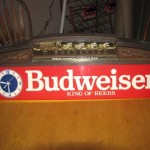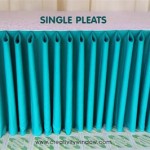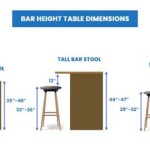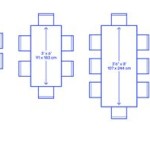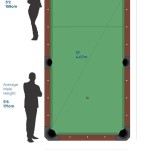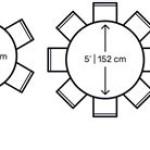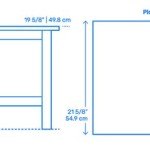The Enduring Appeal of the End Table with Drawer: Functionality and Style
The end table with drawer represents a quintessential piece of furniture found in living rooms, bedrooms, and even home offices. Its popularity stems from a harmonious blend of surface space and concealed storage, offering a practical and aesthetically pleasing solution to common organizational challenges. Understanding the nuances of this furniture piece, its various styles, materials, and functional considerations, is essential for making informed decisions when selecting the right end table with drawer for a specific space.
End tables, by definition, are small tables designed to be placed at the end of a sofa, chair, or bed. Their primary function is to provide a convenient surface for placing items such as lamps, drinks, books, or remote controls. The addition of a drawer elevates this functionality by offering a hidden compartment for storing smaller items, reducing clutter and enhancing the overall tidiness of a room. This combination of open display space and concealed storage makes the end table with drawer a highly versatile and desirable furniture item.
The design of end tables with drawers has evolved significantly over time, reflecting changing aesthetic preferences and technological advancements. From traditional wood construction with intricate carvings to minimalist designs with sleek metal frames and clean lines, the options available today cater to a wide range of interior design styles. The specific features of the drawer itself, such as the type of drawer slides, the handle or knob design, and the interior dimensions, also contribute to the overall functionality and aesthetic appeal of the end table.
Key Point 1: Exploring Different Styles and Materials
The design of an end table with drawer is significantly influenced by the desired aesthetic. A traditional style often incorporates elements such as carved details, turned legs, and a rich, dark wood finish. Common wood types used in traditional end tables include mahogany, cherry, and oak. These tables often feature brass or antique-style hardware for the drawer pulls, further enhancing their classic appeal.
In contrast, a modern or contemporary end table with drawer often emphasizes clean lines, minimalist forms, and a lighter color palette. Materials used in modern designs can include engineered wood, metal, glass, and even concrete. Drawer pulls may be simple and geometric, or the drawer might feature a push-to-open mechanism, eliminating the need for visible hardware altogether. The emphasis is on functionality and simplicity, with a focus on creating a streamlined and uncluttered look.
Transitional styles bridge the gap between traditional and modern aesthetics, blending elements from both. These end tables might feature a simpler silhouette than a traditional piece but still incorporate wood details and a neutral color palette. The drawer pulls might be understated but elegant, offering a touch of sophistication without being overly ornate. Transitional end tables are a versatile option that can complement a variety of interior design schemes.
The materials used in construction also play a crucial role in the overall look and feel of the end table. Solid wood offers durability and a timeless appeal, while engineered wood provides a more affordable and sustainable alternative. Metal frames can add a touch of industrial chic, while glass tops create a sense of lightness and airiness. The choice of materials should be carefully considered based on the desired aesthetic, the budget, and the expected level of use.
Beyond the main body and drawer, the hardware also contributes significantly to the furniture's style. Drawer handles and knobs can range from simple metal pulls to ornate ceramic or glass designs. The finish of the hardware, such as brushed nickel, polished chrome, or antique brass, can further enhance the overall aesthetic. The selection of hardware should complement the overall design of the end table and reflect the desired style.
Key Point 2: Functionality and Practical Considerations
Beyond aesthetics, the functionality of the end table with drawer is a crucial consideration. The size and dimensions of the table should be appropriate for the space in which it will be placed. Consider the height of the adjacent seating or bed to ensure that the table surface is easily accessible. The depth of the drawer is also important, as it will determine the amount of storage space available.
The type of drawer slides used in the end table can significantly impact its ease of use and longevity. Ball-bearing slides offer smooth and quiet operation, while center-mounted slides are a more economical option. Full-extension slides allow the drawer to be fully opened, providing complete access to the contents. The quality of the drawer slides is an important indicator of the overall quality of the end table.
The interior construction of the drawer should also be examined. Dovetail joints are a sign of quality craftsmanship and offer superior strength and durability. The drawer bottom should be made of a sturdy material, such as plywood or solid wood, to prevent sagging or warping over time. The interior finish of the drawer should be smooth and free of splinters to protect the contents from damage.
Consider the weight capacity of the end table, both on the surface and inside the drawer. If you plan to place heavy items on the table, such as a large lamp or a stack of books, ensure that the table is sturdy enough to support the weight. The drawer should also be able to handle the weight of its contents without straining the drawer slides or the drawer construction.
Finally, consider the features that might enhance the functionality of the end table. Some end tables include built-in power outlets or USB ports, providing a convenient way to charge electronic devices. Others may feature adjustable shelves or removable dividers in the drawer, allowing for customized storage solutions. These added features can significantly enhance the overall user experience.
Key Point 3: Choosing the Right End Table for Your Space
Selecting the right end table with drawer requires careful consideration of several factors, including the size of the space, the existing décor, and the intended use of the table. Start by measuring the available space and determining the maximum dimensions that the end table can occupy without obstructing traffic flow or overwhelming the room. Visualizing the table in the space, either by using painter's tape to mark the dimensions on the floor or by using a room planning tool, can be helpful.
Consider the overall style of the room and choose an end table that complements the existing décor. Match the wood finishes, metal accents, and color palette to create a cohesive look. If the room features a mix of different styles, consider a transitional end table that can blend seamlessly with both traditional and modern elements.
Think about the primary function of the end table and choose a model that meets those needs. If you need ample storage space, opt for a table with a large drawer and potentially an additional shelf. If you primarily need a surface for placing drinks or snacks, a smaller end table with a durable top might be sufficient. If you need to charge electronic devices, consider a table with built-in power outlets or USB ports.
Evaluate the quality of construction and choose an end table that is built to last. Look for solid wood construction, sturdy drawer slides, and well-crafted joints. Pay attention to the details, such as the finish of the wood, the quality of the hardware, and the smoothness of the drawer operation. Investing in a high-quality end table will ensure that it remains a functional and attractive addition to your home for many years to come.
Finally, consider your budget and choose an end table that offers the best value for your money. Prices can vary widely depending on the materials, construction, and features of the table. Set a realistic budget and prioritize the features that are most important to you. Comparing prices from different retailers and reading online reviews can help you find the perfect end table at a price that you can afford.
In conclusion, the selection of an end table with drawer requires thoughtful consideration of style, function, and quality. By carefully evaluating these factors, individuals can find the perfect piece to enhance their living space and provide both practical storage and aesthetic appeal. The enduring popularity of this versatile furniture item is a testament to its ability to meet the diverse needs of modern homeowners.

Grooved Wood Square Accent Side Table With Drawer Natural Hearth Hand Magnolia Target

Home Decorators Collection Danforth Square Antique Patina Finish Wood 1 Drawer End Table 22 In W X 24 5 H Acb 2609 109 The Depot

Warwick End Table With Drawer Brown Threshold Target

End Table With Drawer T478 3 Afw Com

Mid Century Side Table 20 5 West Elm

Maple Wood End Table Drawer Shaker Furniture Handmade Side Venn Maker

Maykoosh Cream 1 Drawer Wooden End Table With Storage Shelf Nightstand And For Small Spaces Bed Side 53849mk The Home Depot

Homcom Slim End Table With 2 Drawers And Storage Shelf Sofa Side For Living Room Narrow Nightstand White Aosom

End Table With Drawer And Door Mackeie Dow

Walker Edison Farmhouse 1 Drawer 19 Side Table White And Grey Com

